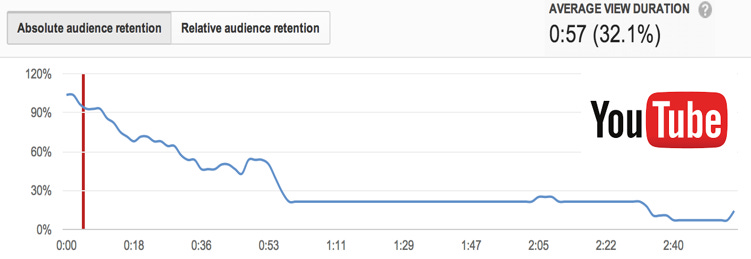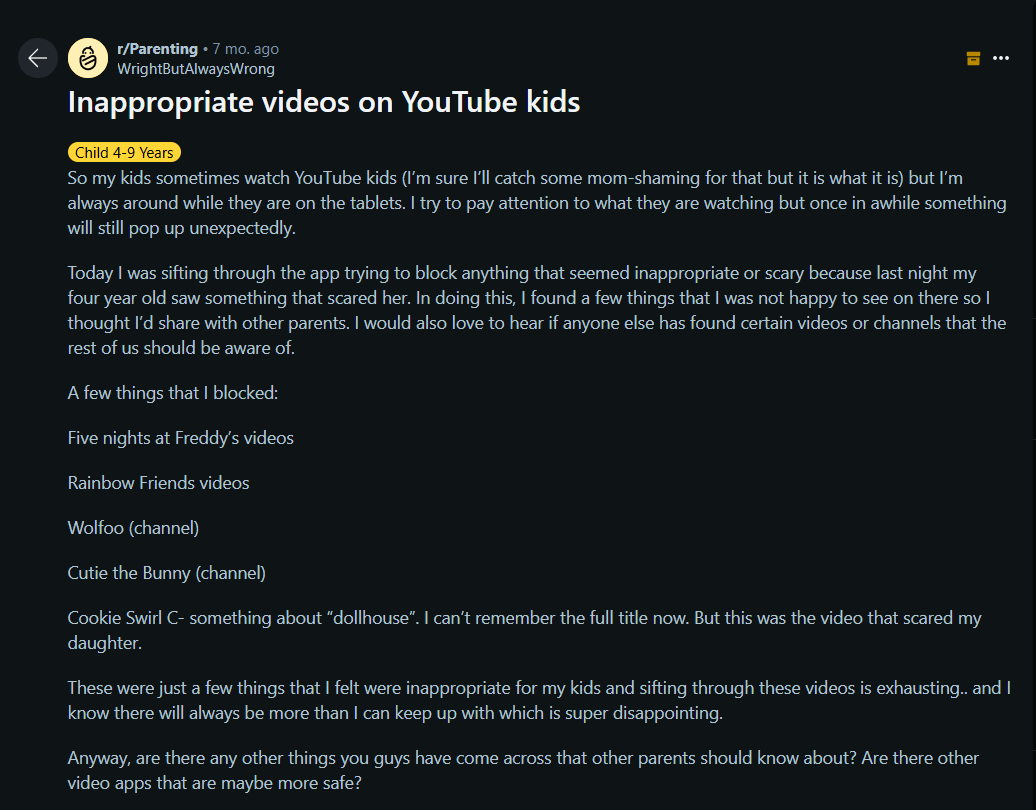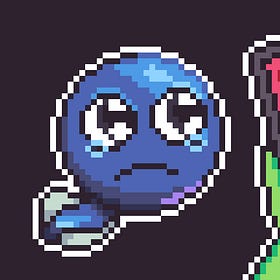
would you raise your child through YouTube?
the new generation is being raised in a very different way from our childhood, is it a bad thing?
Estimated reading time: 16 minutesIt’s probably the case that when you ask a person who is in a different generation from you, the way that they grow up, what they spend time doing, and their way to entertainment will also be drastically different from yours.
I have an older brother, who is a millenial. It’s not until his highschool that our parents could purchase a personal computer, so his childhood is mostly about playing with neighbour kids, reading some mangas and going to school. I, on the other hand, grew up with a personal computer at home; most of my childhood I spent time at home playing video games, watching TV, reading the manga that my brother left behind, and occasionally going outside to play with the neighbour kids.
However, after spending well above 60% of my childhood staring into some kinds of screens, I still found it surprising that recently, kids are exposed to the Internet way earlier than me, not a few months earlier, not a few years earlier, but babies and toddlers. And it’s not a rare sight that you would only see in just one or two kids, but very rarely would I now see a kid that is not staring at screens, at that very moment. It’s like Youtube has become the number one competitor of nannies, and we’re having a generation raised entirely by Youtube.
a generation raised by YouTube
Now let’s pause this for a moment, keep your eyes right in the line of this sentence and try to think very hard. If I ask you what the most watched video on Youtube is, like the most popular thing ever, would you be able to tell me what that video is? I’ll give you 3 seconds.
.
.
.
It’s Baby Shark Dance. It’s the first with 13.93 billion views, coming really close to be double as much as the world population.
I had a history with this song. The first time I had an encounter with this song was that this was the one song that we had to dance to every morning when I was in my dorm school. Being tired and irritated from sleep deprivation does not exactly give me a really good impression of this song. I fucking hate it.
All the other times I have reunited with this song, it was when some parents were blasting this song on either their phones, their tablets, or their TVs while spoonfeeding their toddler, while the kids were having the level of attention that I want to have when it is time to study for my finals. Kids fucking love it. I still fucking hate it.
It’s a really common experience when you see a parent opening something on their iPads when they want their child to shut up and give them some peaceful time. If you grew up before the invention of iPhones and iPads, you’d probably see how hard it is to convince a child to do something.
Parents are historically forced to go into begging, threatening, sweet-talking, and mentally manipulating their babies just so that they can put a spoon in the kids’ mouth. It’s a real struggle. They spit, they cry, they close their mouths, and they hold the food, waiting for whatever chemical reactions are going on there to dissolve instead of just chewing the thing.
And if you have met toddlers, they’re fucking monsters. They yell, they break, they punch, they hit. They don’t have manners yet, nor sympathy, that’s an adult thing. For now, they’re fucking little monsters. If a parent of a toddler met a Genie the first wish what they’re going to come up with would not be having more wishes, it would be that their toddlers could shut up and behave. And Genie, smiling devilously, invented the iPad, with YouTube.
I think that any parents can think of a million reasons why their children should not be watching Yutube and TikTok that much on their iPads, but the reason that they keep doing that is the iPad works magic. It takes away all of the child’s attention and puts it in that little box, and now you parents get the ability to do whatever the hell you want, from spoon feeding the children, to having some inner peace for their yoga sessions. It’s a dream come true. Thank you Steve Jobs.
It also works well as a carrot-and-stick strategy.
Want your child to do something?
“If you do X, I will let you borrow the iPad”
Want your child not to do something?
“If you don’t stop doing X, I won’t let you borrow the iPad anymore”
And it works. EVERY. SINGLE. TIME. Unless you have an anti-authoritarian child who wants to disrupt the power hierarchy of society, this is the kind of “pro tip” that another parent would proudly give you if you ever asked them how they make their kids behave.
I think generally, letting your kids watch YouTube is not synonymous with opening their mouth and chugging poison in there. It’s a tool, i.e., whether it does more harm than good is based on how you use it, i.e., whether your supervision is proper.
But not every parent knows that they need to do that, if they decide to bring YouTube in front of their children’s faces.
the world of YouTube without supervision
Not every video on YouTube is as harmless to children as Baby Shark Dance, even those aimed at children. YouTube Kids, designed specifically for viewers under 12, asserts full responsibility for the content it shares, making a promise that anything obscene, inappropriate, or even mildly violent is removed. However, this does not encompass all potentially problematic material being shown to children.
There are millions of videos being pumped into Youtube every day. Imagine managing YouTube as if you’re managing a giant ball house, and content moderation is like trying to scan every atom in existence of each ball going into the house to find out if there’s anything inappropriate. Even with thousands of employees and AI, it’s impossible to do a perfect job. There are loopholes, subtle things that go beyond the radar, and not all videos that pass through these filters are entirely free of issues.
youtube kids, explained to adults
The biggest YouTube kids channel at the moment is Cocomelon, with around 175 million subscribers, being the third biggest channel overall, after T-Series and Mr. Beast.
The studio produces videos for young children featuring various animated characters who sing lullabies and tell kid-friendly stories. According to Bloomberg, within a month, Cocomelon’s videos received over 3.5 billion views, surpassing all other YouTube channels. It’s the most viral children’s show today (and maybe ever?)
It might not be obvious to an adult what exactly is appealing to kids in those videos. The colors are vibrant, the music is catchy, and there’s always something moving in every second of the video. But to the creators, they know exactly what works and what doesn’t in grabbing the child's attention.
The metric is audience retention; its job is basically trying to tell you when the audience has lost interest. Cocomelon and other channels aimed at kids can see at exactly which second the child's attention drifts and theorize on what caused that drift. One video after another, they have found the perfect recipe: a 2-3 minute fun children's song filled with vibrant, cute characters; there's always something moving in every frame.
But as mentioned above, as YouTube has turned into a global babysitter—a low-maintenance nanny to keep the kids busy - parents have started looking for videos that could occupy children for longer periods of time. Consequently, the meta of YouTube Kids today isn't short, three-minute songs, but rather compilations that extend for 30 to 45 minutes or even go on for days live.
As simple as it may seem, Cocomelon’s regular video uploads, consistent use of familiar yet diverse characters, and unified aesthetic give it a significant advantage over other nursery rhyme compilations on YouTube.
Additionally, it’s free to stream. Parents from anywhere looking for kid-friendly content can easily access Cocomelon on any device with YouTube, making it a convenient choice for entertaining their children.
But nursery rhymes and other kids’ songs in channels like Cocomelon is not simply a form of entertainment. According to Professor Usha Goswami, they help infants better develop their language system.
“We believe that speech rhythm information is the hidden glue underpinning the development of a well-functioning language system,” said Goswami. “Infants can use rhythmic information like a scaffold or skeleton to add phonetic information on to. For example, they might learn that the rhythm pattern of English words is typically strong-weak, as in ‘daddy’ or ‘mummy’, with the stress on the first syllable. They can use this rhythm pattern to guess where one word ends and another begins when listening to natural speech.”
“Parents should talk and sing to their babies as much as possible or use infant directed speech like nursery rhymes because it will make a difference to language outcome,” she added.
So, while Cocomelon's nursery rhymes and aesthetic might not appeal to adults, the producers behind the show are hitting all the right notes to ensure that their brand becomes as prominent among babies as possible.
But not everyone creating content targetted at kids on YouTube is doing it in good faith.
Parents have reported that perpetrators have designed their content to be almost identical to other kid content on YouTube, while inserting inappropriate and disturbing material involving popular characters.
Before anyone says, “Hey, at that age, I have watched even more violent and scary things, I turned out fine?”, I couln’t agree more. But I think we’re heavily ignorant of the effect of the media we consume as a kid on our own development. Medical experts warn that this type of content can negatively impact a child's developing brain. Dr. Donna Volpitta, founder of The Center for Resilient Leadership, explains that "children who constantly experience stress and fear may see underdevelopment in areas of the brain like the prefrontal cortex and frontal lobe, which are crucial for making decisions and planning ahead."
Even more concerning is that some of this disturbing content is slipping through the cracks into YouTube Kids. Although these harmful videos represent only a small portion of YouTube's vast kid-oriented content, they highlight the potential for abuse on digital platforms that rely on algorithms to filter material.
While we don't know much about the people behind these disturbing videos, their harmful intentions are clear. These misleading videos often start off looking harmless but take a dark turn after a few minutes.
Recently, Disney and Nickelodeon have stated they are exploring ways to prevent these disturbing videos from reaching young viewers. Google has also apologized for the presence of these videos and acknowledged that more action is needed. With millions of videos uploaded to YouTube every day, filtering out harmful content is a massive challenge.
Answering CNBC, Natasha Daniels, LCSW, child psychotherapist in Chandler, Arizona, shares,
“There have been times when a child is brought to my office between [the ages of] eight and 10 and they’re found doing sexual things: oral sex, kissing and getting naked and acting out sexual poses. This usually indicates some sort of sexual abuse. In the past, whenever I did some investigating, I would find a child who has been molested himself or that an adult has been grooming the child for abuse. However, in the last five years, when I follow the trail all the way back, it’s YouTube and that’s where it ends,” said Daniels.
For kids, stumbling upon inappropriate content online can be confusing and distressing. It's crucial for adults to create safe digital environments and educate children about what to do if they encounter anything that makes them uncomfortable.
However, the issue isn't limited to just content that is downright problematic, like being violent or sexual. It can be confusing for even parents who are not yet educated on the topics. Let me introduce to you the perfect product of capitalism:
consumerism, introduced to kids
Many parents, and much more children, might not realize that much of the YouTube content they are watching is essentially an advertisement if advertisements were interesting, as sponsored videos often resemble organic content.
Children are particularly susceptible to advertising and are a key target group for marketers.
First, because they’re dumb. Their media literacy, or understanding and skills related to recognizing and interpreting advertisements, is not fully developed. The word “advertisement” is not even in their vocabulary. Have you ever heard a kid stand up and tell their parents: "No, mom, this video is obviously an advertisement in disguise, a testament to capitalism and an advocate of consumerism. I will not tolerate, I want you to change into other videos for me”. Have you?
Second, it’s because of their influence on their parents' purchasing decisions and their potential as future consumers. Have you ever tried to tell a kid “no, you cannot buy that toy?”
When I was a child, the only times my parents were pressured to buy me a toy were when they decided to bring me within a radius of 10 meters around the toy store. The moment I set eyes on the new power ranger figures, I will, with every fibre of my being, cry, yell, punch, just to bring home those little guys. But apart from those times, it rarely occurred to me that the 6-year-old Duy needed a new toy.
Now, toy reviews are one of the biggest kids’ content on Youtube. Kids love to watch that stuff. No, not that they are responsibly finding information about a product they want to buy, like every other person watching reviews out there, but they watch toy reviews because those toys are amazing as hell. You would want to buy it if you watched it as much as they did. And of course, kids want those toys like their life depend on it.
And how do you make kids want to buy the thing even more? Having another kid review the toy in question. That’s why there are so many toy reviewers out there who cannot legally make a TikTok account. It’s the 6-year-old version of peer pressure as we know it. These so-called “kid-influencers”, they act kids, they talk kids, they relate to kids. Your kid can see themselves in there. If an adult has it, it’s fine, he has adult privillege and live in a mysterious world, but if another kid has it, MOM WHY WOULDN’T YOU BUY THIS FOR ME?
Ryan's World, originally known as Ryan ToysReview, is a popular YouTube channel aimed at children aged 2–6. The channel features young Ryan Kaji, his parents (Loann and Shion Kaji), and his twin sisters (Emma and Kate). It typically publishes new videos daily.
One of its most popular videos, "Huge Eggs Surprise Toys Challenge," has garnered over 2 billion views as of January 2023, placing it among YouTube's most-viewed videos. By the same date, the channel had amassed over 34 million subscribers and more than 45 billion total views, ranking it among the top 10 most-subscribed channels in the United States.
Forbes reported that Ryan Kaji earned $11 million between 2016 and 2017, making him the eighth highest-paid YouTuber at the time. He topped the list in 2018, 2019, and 2020, with earnings of $22 million, $26 million, and $29.5 million respectively from his videos and associated product lines.
Since these kid-influencer videos are often sponsored by kid-focused businesses like toy stores or amusement centers, these types of vlogs frequently showcase extravagant items that are beyond the reach of the average person, regardless of where they live. God bless you when you try to convince your kids that you don’t have money to buy Air Hogs Super Soft, Stunt Shot Indoor Remote Control Car with Soft Wheels.
Even when the god of capitalism blesses and you can afford the gorgeously gift-wrapped toy your kid has just watched being unpacked by the influencer, it could take a lot of time to reach the stores near you or get shipped to your place. Your little ones will soon get frustrated and move on to another toy that they see in the next video, while you have probably already spent money online. It’s a vicious cycle.
While “educated” channels like Cocomelon aim to teach basic manners and instill a civic sense in children, social media stars - known as vloggers or real-life 'kidfluencers' on YouTube - have become significant influencers on the consumer decisions of young audiences.
Beyond promotions, the lavish birthday parties and extravagant celebrations hosted by these young influencers are akin to royal affairs. While spending lavishly on children is a personal choice for those who can afford it, flaunting such purchasing power to those who cannot is problematic. Children, unable to distinguish between glitter and gold, may be unduly influenced by these displays of wealth.
The idea of right and wrong is best taught at this stage, but ‘kidfluencer’ content takes no responsibility in this regard. From wasting food to spoiling their siblings’ school books, everything is casually considered a forgivable act of annoyance to be laughed off.
telling your kid to touch grass
Not every parent is for YouTube Kids. Billionaire parents like Bill Gates raise their kids with little to no screen time.
Chamath Palihapitiya, founder of Social Capital, told CNBC: “There’s no screen time whatsoever.” In the interview, Palihapitiya said his threechildren, ages 5 to 9, still ask “all the time because their friends have it all the time.” .
“Here’s the life that I live with my children, which may not be for everyone,” he said. “I don’t like this co-dependency of ‘they need to rely on me, and when they can’t, I feed them a device because that becomes a babysitter’.”
Choosing to limit screen time, however, demands a significant commitment. Parents must actively seek out and plan alternative activities that can capture their children's interest and provide meaningful engagement. This involves a considerable amount of time, energy, and creativity.
Maintaining a child's interest without the aid of screens can be particularly challenging. Young children have short attention spans and can quickly grow bored with repetitive activities. This means that parents need to continuously come up with new and exciting ideas to keep their children engaged. Crafting projects, baking together, building forts, and exploring nature are just a few examples of activities that can be both fun and educational. However, each of these requires a level of planning and adaptability to suit the child's mood and interests on any given day.
Another layer of complexity is added by the need to balance these activities with the parents' own responsibilities. Whether it's managing a household, working from home, or attending to other children, parents often find themselves stretched thin. Unlike screens, which can occupy a child with minimal supervision, most alternative activities require parental involvement or at least oversight. This can be particularly taxing for parents who are already juggling multiple duties.
Whether it’s organizing arts and crafts projects, planning outdoor adventures, setting up playdates, or curating a selection of books and educational toys, each activity requires preparation and often direct involvement from the parents.
Despite the challenges, parents who commit to reducing screen time often find the experience immensely rewarding. According to Lynn Barnett (2008), the benefits of engaging children in a variety of activities are manifold.
The most commonly reported benefit by mothers was the development of their child's character through involvement in a recreational activity program. Additionally, mothers believed these activities contributed to their child's physical development, social development, and the enhancement of skills and performance. They also mentioned that their child enjoyed participating in these activities and developed interests that would likely persist into the future.
Additionally, it fosters stronger family bonds as parents and children spend more quality time together. Parents also often notice improvements in their children's behavior, attention spans, and overall well-being.
While the path of minimizing screen time in favor of diverse activities is fraught with challenges, it is a journey that many parents find deeply fulfilling. The effort invested in creating a rich and varied environment for children to explore and learn can yield significant developmental benefits and strengthen the parent-child relationship.
In a world dominated by screens, choosing to engage children through more traditional means is a testament to the enduring value of creativity, patience, and human connection.
What is your opinion on using YouTube when raising a kid?
















This is a very insightful post, really hope there is vietnamese translation so that i can send it to my Uncle and Auntie
a great read! how did you create the cool animation at the beginning of this post?